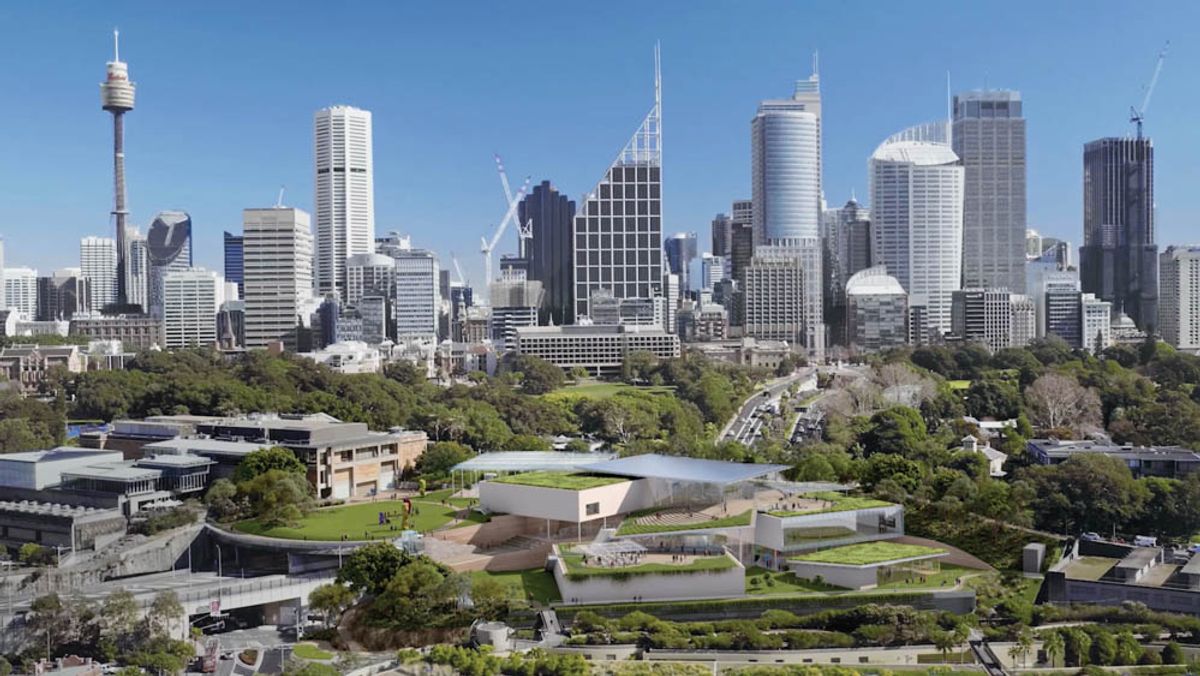The Art Gallery of New South Wales, which overlooks Sydney Harbour, will in December open what is known as the Sydney Modern Project. The huge architectural expansion project is historic; it will be the Australian city’s largest cultural development since the creation of the Sydney Opera House nearly half a century ago.
“When we open on 3 December, visitors will experience art right across our campus—indoor and outdoor—from the inaugural installations in our new building to the completely reinstalled galleries in our existing buildings,” says Maud Page, who has worked as the deputy director and the director of collections at the museum since 2017. She was previously the director of collections at the Queensland Art Gallery and Gallery of Modern Art in Brisbane, where she was instrumental in launching the Asia Pacific Triennial of Contemporary Art. In doing so, Page, who was born in Paris, has established herself as one of the world’s leading curators when it comes to indigenous, Aboriginal and Torres Strait Islander artists.
Such cultures can teach Australian society a lot, Page says: “We are living through pandemics, wild fires, earthquakes, and we need to act differently. Indigenous knowledge can show us a different way. But how do we change, structurally, to receive that information?”
The Sydney Modern Project has cost A$344m ($225m), with A$244m coming in government funding and A$100m from private donations. The new museum has almost double the exhibition space of its predecessor, from 9,000 sq. m to 16,000 sq. m, thanks to architectural designs by the Pritzker Prize-winning firm Sanaa, led by Japanese architects Kazuyo Sejima and Ryue Nishizawa. A new public garden dotted with new sculptures, and designed by Kathryn Gustafson and McGregor Coxal, will adjoin the new museum.
The expansion has led to a full reappraisal of the museum’s collection of 36,000 objects, which includes 2,000 works of Aboriginal and Torres Strait Islander art. These historically overlooked works have been brought to the fore by Page, while contemporary indigenous artists have been asked to respond to the expansion; a new work by Wiradjuri artist Karla Dickens, for example, will now adorn the façade of the original building. To See or Not to See comments on patriarchy and colonial history through a series of hooded figures. “We wanted Karla to fill that space and bring back a female artist to the fore,” Page says.
In the Yiribana Gallery, meanwhile, a monumental installation by Wiradjuri artist Lorraine Connelly-Northey will explore how some Aboriginal people have successfully lived nomadic lives. “It’s about bringing a customary practice of south-east Australia into the contemporary world,” Page says. “We are not interested in big, broad, shiny works, but rather in art that reveals the quality of humanity. Thinking through what indigenous knowledge means is what makes us different.”


